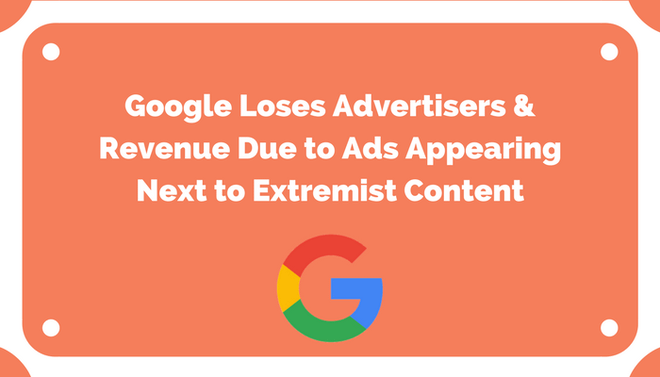While display advertising and remarketing campaigns can prove to be an effective method of driving cheap traffic back to your website, there are certain drawbacks to investing in these type of campaigns. Typically, those concerns are related to low click-through rates and lack of covnersions, but in a recent development, it seems like appearing next to offensive and extremist content has become the biggest concern for certain brands. According to USA Today, a number of companies, such as AT&T, Verizon, and Johnson & Johnson, have stopped campaigns within Google AdWords and YouTube to prevent their ads from being shown next to offensive content.
In order to alleviate the fears of advertisers, Google has stated that it will be extra diligent in preventing ads from showing next to controversial content, but that has yet to restore the faith of major advertisers, which has resulted in the following brands taking action:
- AT&T has cut all digital advertising with Google except for search ads, which allows it to control where ads are placed.
- Verizon has ceased advertising on all platform within the Google network.
- Johnson & Johnson has paused all video advertising on YouTube.
Unfortunately for Google, these major brands pulling ads represents a rather significant loss in revenue, which is estimated to be upwards of hundreds of millions of dollars. Of course, halting spend on advertising is equally as bad for the brands listed above, as their competitors now have an opportunity to dominate the ad space available within Google’s display network and YouTube. This is why an expedient and swift resolution is in the best interest of both Google and these advertisers.
For smaller business, cutting budgets entirely from Google AdWords may not be a practical, especially if advertise fuels the traffic needed to be profitable online. However, there is solution to prevent your ads from being shown next to extremist and/or offensive content. In order to maintain momentum for your campaigns, here is what can be done to control where your content is shown:
- Develop a shortlist of sites, apps, and YouTube channels you want to exclude from your campaigns and add them as negative placements. For example, you can add Breitbart, a conteoversial online news publication, to your list of sites to exclude.
- If your using keywords and/or topics for targeting, be sure to exclude anything that may be incorporated with offensive content.
- Actively review your placements on the display network and/or YouTube to ensure that your ads are associated with the right type of content.
The last point is a rather essential element when it comes to remarketing campaigns. There’s no telling who is visiting your website and where they will venture to next, so it’s important to continuously review your placements and exclude any sites that may not be appropriate (it’s also essential for optimizing your campaigns in general, so please don’t ignore the display network data).
It remains to be seen how long these advertisers will keep their campaigns paused, but for Google’s sake, it better not be too long.
